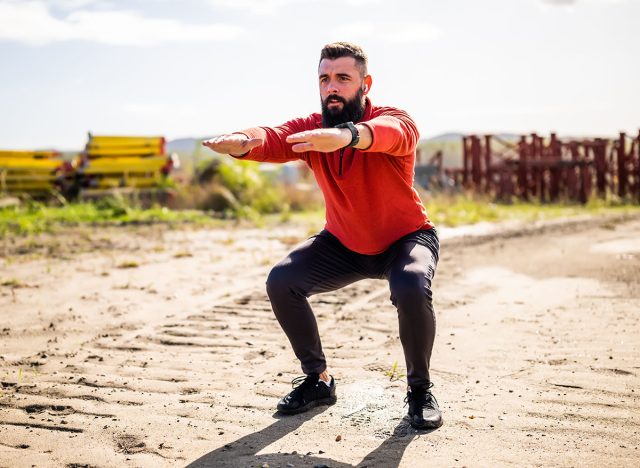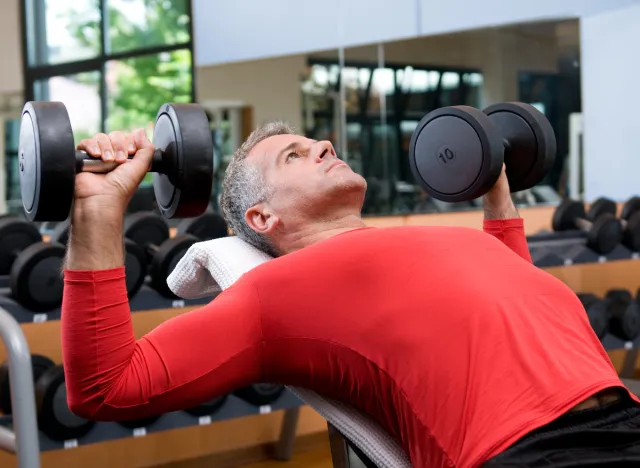I Did All My Workouts in Slow Motion for 30 Days—& Experienced 4 Incredible Changes

If you've ever caught yourself rushing through your workout routine, thinking faster means better results, you're not alone. During my work at Brentwood Physio, Sports Physiotherapy Calgary, I noticed a common problem among my clients, from everyday gym-goers to elite athletes—they weren't activating the right muscles, which meant they weren't getting the full benefit of their workouts. As a physiotherapist with over 35 years of experience working with both elite athletes and regular fitness enthusiasts, I've seen firsthand how this common mistake can limit results and increase injury risk. That's why I developed a slow-motion training method that's transformed my clients' results—including helping one athlete make it to the MLB. Here's what happened when I put this method to the test for 30 days and how you can use it to revolutionize your own fitness journey.
The Science Behind Slowing Down Your Workouts

When you deliberately slow down your exercise tempo, you're forcing your muscles to stay under tension for longer periods. This extended time under tension prompts your muscle fibers to work harder, leading to greater activation and potential growth.
The slower pace also naturally improves form, significantly reducing injury risk. Think of it as giving your muscles more time to fully engage in the work rather than letting momentum do half the job.
Here's Exactly How Slow You Should Go

The key is finding the right tempo for each movement.
- For squats, lower yourself for 3-4 seconds, then push back up for 2-3 seconds.
- Push-ups should follow a similar pattern: a 3-second descent followed by a 2-second push back to the starting position.
- For pulling exercises like rows or lat pull-downs, aim for a controlled 3-second pull and 3-second release.
The goal isn't just moving slowly—it's maintaining smooth, controlled movement throughout the entire exercise.
Your 30-Day Slow-Motion Training Plan

Start with fundamental compound exercises like squats, military presses, and bench presses. These movements engage multiple muscle groups and provide an excellent foundation for mastering the slower tempo.
Target major muscle groups 1-2 times per week, gradually increasing weight and volume as you adapt. Stick to 3 sets of 8 reps per exercise, resting 90 seconds between sets to ensure proper recovery.
Remember: form trumps everything—you'll likely need to reduce your usual weights to maintain proper technique at this slower pace.
The Incredible Changes I Noticed

After 30 days of slow-motion training, four major improvements stood out. First, my overall muscle strength increased significantly thanks to better muscle activation. Second, I developed much better control and form in all my movements, which notably reduced my risk of injury. Third, my mind-muscle connection improved dramatically—I could actually feel the specific muscles working during each exercise. Finally, these physical improvements led to a noticeable boost in confidence, both in and out of the gym.
What You Need to Know About Recovery

Success with slow-motion training isn't just about what you do in the gym. Proper nutrition plays a crucial role in supporting this intensive form of training. Focus on consuming adequate protein and maintaining proper hydration to prevent muscle fatigue and support recovery. A balanced diet rich in whole foods will provide the nutrients needed to repair and build muscle effectively.
A Pro Athlete's Perspective

One of my most notable success stories comes from working with a baseball player who eventually made it to the MLB. Initially skeptical, he committed to three months of slow-motion training and saw remarkable improvements in muscle control, endurance, and overall performance. While he's now back to training at full speed, the foundation built through slow-motion training continues to enhance his athletic performance.
Ready to Try It? Start Here

For those skeptical about slowing down their workouts, I have a simple challenge: commit to just one week. Start with lighter weights than usual and focus entirely on form and feeling each muscle working. Track your progress and celebrate the small wins—you'll likely notice improvements sooner than you expect. Ready to transform your workout routine? Your stronger, more controlled future starts with your very next rep. And if you enjoyed this article, don't miss How Long Your Walking Workout Should Be To Shrink Belly Fat.









